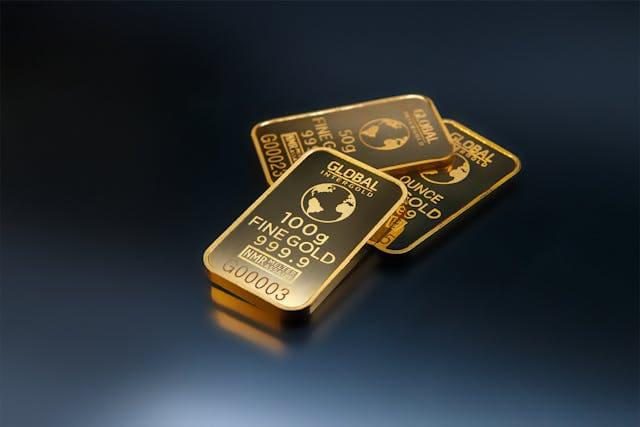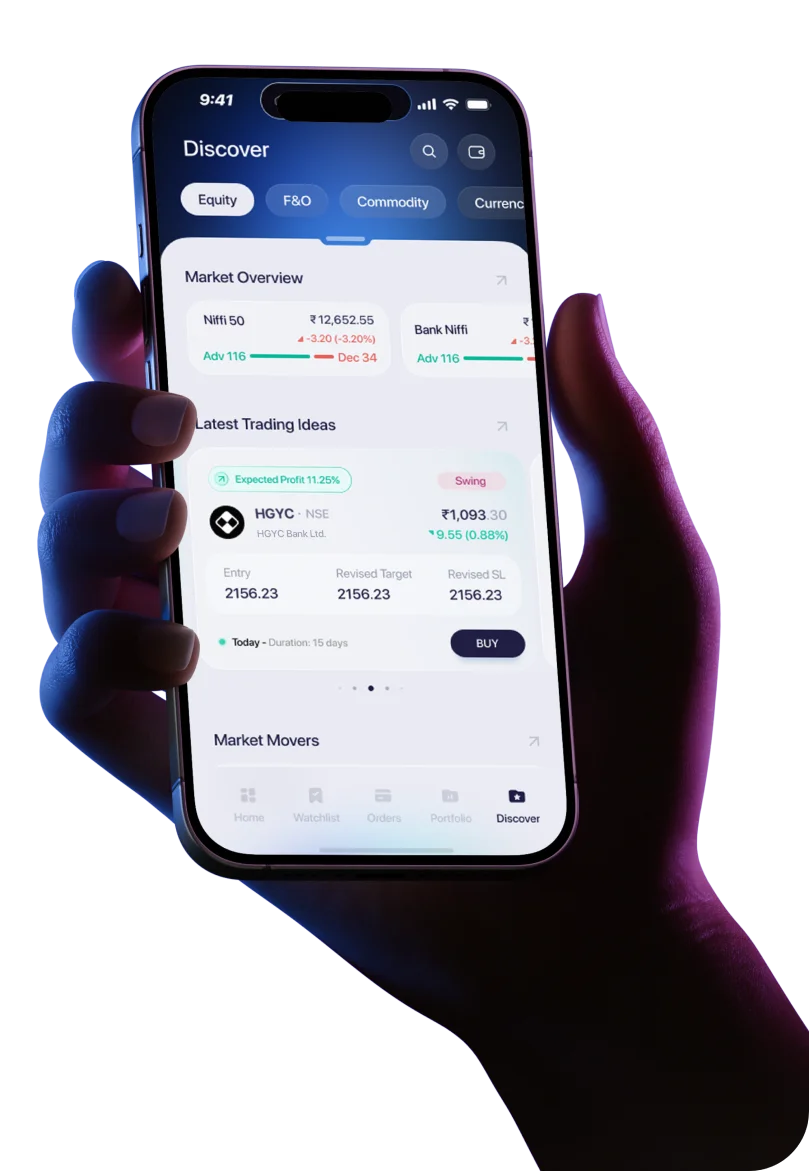The Importance of Gold in Today’s Market
Gold has long been a symbol of wealth and stability. From ancient trade to modern economies, it has remained a reliable store of value. Central banks hold it as a reserve asset, and during periods of financial turmoil, investors flock to gold as a hedge against inflation and currency fluctuations.
When the stock market is volatile or inflation surges, gold tends to shine as a safer alternative. Recently, gold prices in India have been on a steady upward trajectory. The gold price today soared past the Rs. 86,000 mark (as on February 11, 2025). This reflects the strong demand for the precious metal amid global economic uncertainty.
The availability of gold ETFs has further cemented this asset’s popularity in today’s market. Unlike physical gold, ETFs offer flexibility and liquidity. They are also easy to trade. With ETFs, you can gain exposure to gold without worrying about storage or security. As gold prices may hit all-time highs, these digital alternatives become increasingly relevant as they balance traditional security with modern convenience.
Gold Price Today: Live Trends and Insights
The gold price today has surged to record levels, with the yellow metal trading at over Rs. 86,000 per 10 grams. This significant rise is the result of a broader trend of increasing gold prices in recent times.
Several factors contribute to these daily price movements. Economic uncertainty stemming from concerns over potential import tariffs from the U.S. may lead investors to seek safe-haven assets like gold. Inflationary fears also play a crucial role here because as the cost of goods rises, gold becomes a preferred store of value. Additionally, geopolitical tensions are also driving up the demand for gold because it is viewed as a stable asset during times of crisis.
Comparing today's price to recent trends, it is evident that there has been a notable increase over the past month. More specifically, gold prices have rallied by over 10% to reach record highs, driven by factors like U.S. trade tariff uncertainties and a weakening currency. This upward trajectory indicates a strong demand for gold amid prevailing economic conditions.
It is also worth noting that gold prices near their all-time highs have sparked discussions about whether the rates will decrease soon. Analysts suggest that ongoing global trade tensions could drive gold prices further upward in the near term.
Ultimately, the gold prices today and in the coming weeks are driven by a combination of economic uncertainties, inflation concerns and geopolitical events. You must stay informed about these factors to make more informed investment decisions in the current market.
Gold Price Near an All-Time High: A Historical Overview
With the gold price today hovering near record levels, it is important to look at the bigger picture. Gold’s price movements are not just about daily fluctuations — they are part of a long-term trend that has repeatedly positioned gold as a resilient asset in times of economic uncertainty.
Historical data reinforces this trend. The price of gold at an all-time high is not a random occurrence but a reflection of its strong performance against equities. The research team at Samco Securities has closely analysed the movement of this precious metal using a ratio chart of MCX Gold to CNX 500. When the chart was first published on 29 February 2024, the ratio stood at around 3. Today, it has climbed above 4, meaning gold has outperformed equities and continues to strengthen. Historically, this ratio has reached levels as high as 7, suggesting the potential for even further gains.
Further analysis explored some extreme scenarios. If gold continues its upward march while the CNX 500 index remains stable, gold prices could reach an upper limit of Rs. 1,48,071. On the other hand, if gold holds steady but equities tumble, the CNX 500 index could drop to 12,257 — which is a steep fall of 42% from current levels.
While these are theoretical possibilities, the broader trend is clear: gold’s historical performance justifies its reputation as a safe-haven asset. With gold’s all-time high prices becoming a key talking point, investors are increasingly turning to gold for stability, whether through physical bullion or modern investment avenues like gold ETFs.
Factors Influencing Gold Prices
If you have been tracking gold prices today and in recent weeks, you may be aware of how the numbers have been steadily climbing. Curious about what’s driving the gold prices up? Let us explore the key factors that impact the price of this precious metal.
Inflation and Interest Rates
Historically, gold’s all-time high prices have often coincided with inflationary periods because gold has long been a hedge against inflation. When inflation rises, the purchasing power of currency weakens. This pushes investors toward gold as a safe-haven asset. Lower interest rates also make gold more attractive because it does not yield interest like bonds.
Currency Fluctuations
As the gold price today edges higher, currency movements play a critical role in shaping investor sentiment and global demand. Gold prices and the US dollar share an inverse relationship. When the dollar strengthens, gold becomes more expensive for buyers using other currencies. This, in turn, leads to lower demand. Conversely, a weaker dollar drives up gold prices.
Global Economic Crises
During financial uncertainty, investors flock to gold for stability. Recessions, banking crises or geopolitical tensions can all drive demand for gold and cause its prices to rise. In past crises like the 2008 financial meltdown, gold prices have surged. With uncertainties persisting in global markets, the possibility of gold prices at an all-time high remains a strong probability to consider.
Demand for Gold in Industries and Jewellery
Beyond investment, gold plays a major role in jewellery and industrial applications. India and China, the world’s largest consumers, drive a significant portion of this demand. When festive or wedding seasons boost jewellery sales, it is commonly reflected in the gold price today. This highlights the dual role of gold as a cultural and financial asset.
Central Bank Policies and Gold Reserves
Central banks hold gold as part of their foreign reserves. They typically buy more of the metal during times of economic instability. When central banks increase their gold holdings, it increases confidence in gold’s long-term value and influences global prices. Historically, gold’s all-time high prices have often aligned with the accumulation strategies of central banks.
Investing in Gold: Physical Gold vs. Gold ETFs
If you want to capitalise on the rising gold prices today, you have to find the ideal way to invest in this asset. Physical gold and gold ETFs are among the most popular choices. Let us explore how the two options compare against one another.
Aspect | Physical Gold (Coins, Bars, Jewellery) | Gold ETFs (Exchange-Traded Funds) |
Form of Investment | Tangible asset (jewellery, bars, coins) | Financial asset traded on stock exchanges |
Storage and Security | Requires secure storage (either at home or in bank lockers) | No storage worries since they are held in demat form |
Liquidity | Selling jewellery may involve added charges and deductions; bars/coins require a buyer | Highly liquid; can be bought/sold instantly on the exchange |
Quality | Need to verify purity (hallmarking) | Backed by 99.5% pure gold, as per regulations |
Investment Cost | Involves making charges, storage costs and potential resale deductions | Lower costs, as there are no making charges; however, expense ratio applies |
Accessibility | Can be bought from jewellers, banks or dealers | Easily accessible through stock exchanges via brokers |
Suitability | Preferred by those who want gold for personal use | Ideal for investors seeking exposure to gold without physical ownership |
Both options have their advantages. If you want gold for personal use, physical gold may be the way to go. However, if you seek a hassle-free investment with better liquidity, gold ETFs may be a smarter choice.
The Pros and Cons of Gold ETFs
Gold ETFs have both advantages and limitations. Before you invest in this form of gold, you need to be aware of its pros and cons, as elaborated here.
Pros of Gold ETFs
- Gold ETFs offer a convenient way to invest in gold without the hassle of physical storage.
- They are highly liquid because you can buy and sell units easily on stock exchanges.
- Unlike physical gold, they do not require secure storage. This eliminates locker costs and security risks.
- The gold price today directly influences ETF values, making them a transparent investment option.
- Gold ETFs come with lower transaction costs compared to jewellery as there are no making charges or purity concerns.
Cons of Gold ETFs
- Since they trade like stocks, the prices of gold ETFs fluctuate based on market sentiment and external factors.
- Unlike physical gold, they do not offer the emotional or cultural value of owning gold jewellery or bars.
- They come with nominal management fees that can eat into returns over time.
- Even when gold prices at an all-time high benefit investors, ETF gains are subject to capital gains tax.
Once you weigh the pros and cons of these digital assets, you can decide if gold ETFs are suitable for your portfolio. If you want to invest in these exchange-traded funds, Samco Securities offers a simple and hassle-free investment process. Through our platform, you can buy and sell gold ETFs just like stocks, with real-time tracking of the gold price today.
Open a demat and trading account with Samco Securities, explore various gold ETFs and invest in the funds of your choice with a few clicks. Whether you want to benefit from gold’s all-time high prices or seek long-term wealth preservation, Samco offers everything you need to make smart investment choices.
List of Gold ETFs Available in the Indian Market
With 10+ gold ETFs available in the Indian financial market, you have a wide range of choices available for your portfolio. Here is the list of gold ETFs available for trading on the NSE.
S. No. | Name of the Fund | Fund Issuer | Symbol |
1 | Axis Gold ETF | Axis Mutual Fund | AXISGOLD |
2 | Birla Sun Life Gold ETF | Birla Sun Life Mutual Fund | BSLGOLDETF |
3 | Canara Robeco Gold ETF | Canara Robeco MF | CANGOLD |
4 | HDFC Gold Exchange Traded Fund | HDFC Mutual Fund | HDFCMFGETF |
5 | ICICI Prudential Gold Exchange Traded Fund | ICICI Prudential Mutual Fund | IPGETF |
6 | IDBI Gold ETF | IDBI AMC | IDBIGOLD |
7 | Kotak Gold Exchange Traded Fund | Kotak Mutal Fund | KOTAKGOLD |
8 | Quantum Gold Fund (an ETF) | Quantum Mutual Fund | QGOLDHALF |
9 | Reliance Gold Exchange Traded Fund | Reliance Mutual Fund | RELGOLD |
10 | Religare Gold Exchange Traded Fund | Religare Mutual Fund | RELIGAREGO |
11 | SBI Gold Exchange Traded Scheme | SBI Mutual Fund | SBIGETS |
12 | UTI GOLD Exchange Traded Fund | UTI Mutual Fund | GOLDSHARE |
13 | Reliance ETF Gold BeES | Reliance Nippon Life Asset Management Limited | GOLDBEES |
Gold Price Forecast: What to Expect in 2025?
The gold price today in India (as of February 11, 2025) continues to climb, with analysts predicting a strong uptrend throughout the year. Forecasts indicate that gold could reach Rs. 90,000 per 10 grams if global economic uncertainty persists.
With demand remaining strong, there is potential for gold prices to reach an all-time high this year. Investors closely tracking gold’s all-time high prices should consider how macroeconomic factors can influence gold’s movement because 2025 is expected to be a crucial year for the metal’s valuation.
More specifically, the trajectory of gold prices in the coming months will be impacted by various factors that could drive the numbers up or pull the market down. Prominent among these are the following factors:
Economic Policies
Government fiscal policies, interest rate decisions and trade regulations significantly impact the gold price today. If central banks lower interest rates or introduce stimulus measures, gold tends to rise as investors seek safer assets. Conversely, stronger economic growth and higher rates could slow gold’s momentum.
Geopolitical Tensions
Conflicts, global trade wars and political instability push investors toward gold as a hedge against uncertainty. With ongoing global tensions, the demand for gold remains strong. If risks escalate, gold prices at an all-time high could be tested again.
Technological Advancements in Gold Mining
Innovations in mining technology could increase the supply of gold and potentially stabilise prices. While gold’s all-time high prices have attracted more investment in mining, supply constraints and environmental regulations may keep gold expensive in the long run.
Conclusion: Should You Invest in Gold Today?
Gold has consistently proven its worth as a reliable asset, particularly in times of economic uncertainty. With the gold price today hovering near record levels and projections indicating further growth, it remains a compelling investment choice. Historically, gold has outperformed during inflationary periods. With the central bank continuing to increase reserves, demand remains strong.
For those considering an investment, gold ETFs offer a flexible and cost-effective way to gain exposure to gold without the hassles of storage. With gold prices at an all-time high, the time may be right to evaluate how gold fits into your portfolio for long-term stability.
While past performance doesn’t guarantee future results, gold remains a key asset for diversification. Whether prices surge beyond gold’s all-time high prices or stabilise, its role as a hedge against market volatility cannot be ignored.
Samco Securities offers you the tools you need to explore this avenue further. With the Samco trading app, you can stay updated about real-time gold prices and leverage flexible investment options like gold ETFs today.
Frequently Asked Questions (FAQs)
What causes gold prices to fluctuate daily?
Gold prices fluctuate due to several factors like demand and supply, inflation, interest rates, central bank policies and geopolitical events.
Is now a good time to invest in gold?
With the gold price at an all-time high, it is advisable to carefully assess factors like your financial goals, risk tolerance, investment horizon and market trends before making any investment decision.
What is the safest way to invest in gold?
The safest way to invest in gold is through gold exchange-traded funds (ETFs). Gold ETFs enable you to benefit from the price movements of the precious metal without physically owning it. Investing in gold ETFs mitigates the risks commonly associated with physical gold — like theft, storage and purity concerns.
How do gold ETFs differ from mutual funds?
Gold ETFs track the price of the precious metal by directly investing in the physical gold. They provide direct exposure to gold and have low expense ratios since they are passively managed. Gold mutual funds, meanwhile, provide indirect exposure to gold by investing in gold ETFs. These funds are actively managed by fund managers and usually carry higher expense ratios.
What are the risks of investing in gold ETFs?
Investing in gold ETFs carries certain risks, which include market volatility, price fluctuations and tracking errors. Furthermore, there is also the risk of lower returns due to excessive expense ratios.
Disclaimer: This blog is for informational purposes only and does not constitute financial or investment advice. Gold prices fluctuate, and past performance is not indicative of future results. Please consult a financial advisor before making any investment decisions. Investments in Gold ETFs are subject to market risks.




 Easy & quick
Easy & quick
Leave A Comment?